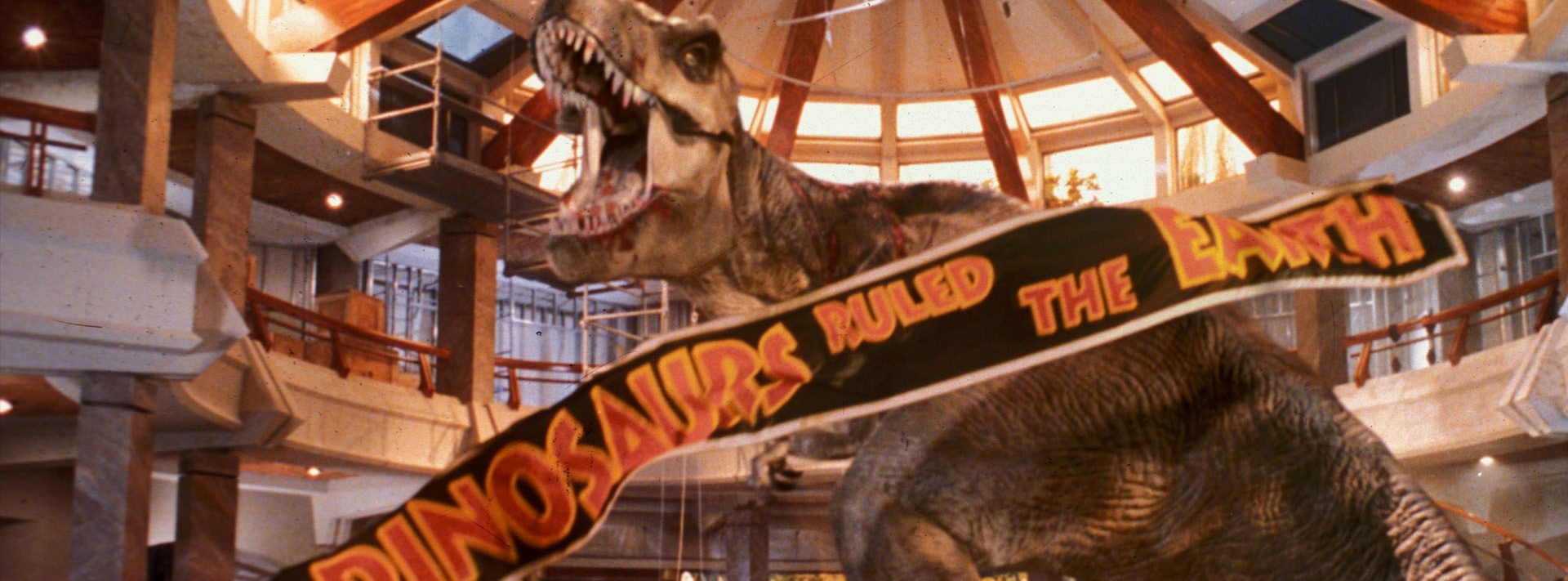Jurassic Park represents a milestone in modern visual effects and ushered an era of films whose scripts were once thought to be impossible to film. To create living, breathing, photorealistic dinosaurs the likes of which had never been seen before, the visual effects team developed a substantial amount of new technology. From Viewpaint, a 3D texturing tool that allowed artists to paint directly on 3D models and see their results in context, to camera motion tracking, to the Dinosaur Input Device (D.I.D.) which was created in collaboration with Phil Tippett, Randal Dutra, Tom St. Amand, and the team at Tippett Studios and used to bridge the gap between traditional stop motion animation and CG animation there were numerous breakthroughs on the film.
No one had put living, breathing synthetic animals in a live-action movie before; creature animation had always been mechanical and animatronic. Before Jurassic Park, animators had never even tried to reproduce real animals digitally for a feature film. But ILM showed Steven Spielberg a test created by CG artists Steve “Spaz” Williams and Mark Dippé with digital dinosaurs, and they looked so natural and moved so freely that there was no turning back.
The breathtaking shots of dinosaurs walking through a field and placidly eating leaves from the tops of trees have become milestones in visual effects and in filmmaking. Suddenly, directors could imagine making films in which realistic animals, fantasy creatures, even digital people could perform without restraint.
This project marks a major advance in digitally simulating living organisms. The various software breakthroughs allow for unprecedented freedom in the digital compositing of CG creations and live-action film. For the first time, all restrictions on camera movement in background plates are removed, thanks to such software tools as Softimage. Jurassic Park is the first major film to use this commercial 3-D animation package. The film also pioneered work in the field of film input scanning.
Although ILM created fewer than 60 shots of the fully CG dinosaurs they remain a huge part of what makes the film so memorable.
The film won the 1993 Academy Award® Winner for Best Visual Effects and as well as the BAFTA Award for Best Special Visual Effects.
